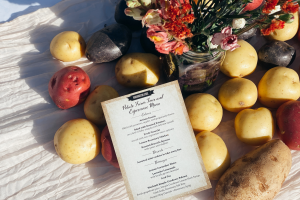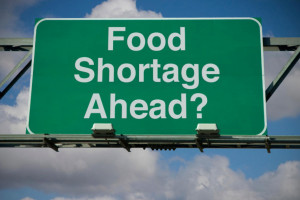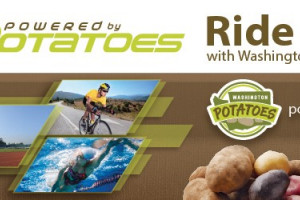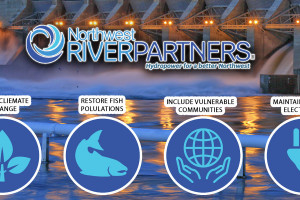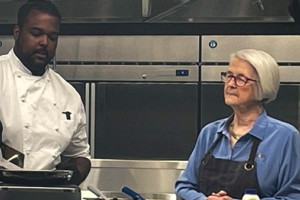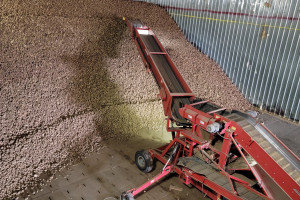Cuyamaca 100K Endurance Run
A few minutes after midnight I came over the finish line. I had started running at 6:30 am the previous morning alongside 245 other participants. We assembled in beautiful Rancho Cuyamaca State Park in the mountains east of San Diego to run the Cuyamaca 100K Endurance Run. We would have to tackle 8,400 feet of elevation gain up mountains and ridges with little shade and in temperatures exceeding 90F. A staggering one third of the field would drop out along the way as the heat and terrain took its toll. I was among the 161 who finished, coming in at 17 hours 44 minutes and 45 seconds. I was beyond ecstatic! I had just finished my first 100 kilometer run—and in my 60s—and in conditions that were extremely challenging. My 62 for 62 challenge was a success. As I stood at the finish line exhausted, my accomplishment slowly registered. I had dreamed big, trained hard, ran smart and now I was reaping the emotional rewards of it all. I was glowing in the night’s darkness
Coming over that finish line was the culmination of reaching a goal I conceived of two years ago. A tri-facto of life-changing events was the catalyst. Acquiring an auto-immune condition (PMR) as I approached age 60 during the Covid-19 Pandemic had me questioning whether my best days were behind. Through medication, an overhaul of my diet and a commitment to start training hard once again for ultra-running I was able to put my condition in remission and realize that the time left in my life was too precious not to accept new challenges and life experiences.
One of my proudest moments in my life was when I ran my first and only 50 mile run, the challenging White River Run to celebrate my 50th birthday. I had just started ultra-running six months before the race. Inspired by so many athletes that could cover that distance over mountainous terrain in less than 14 hours, I wanted to see if I too could be among them. I successfully completed the race and thought that was my limit when it came to distance. But 12 years later not content with my past achievement and refusing to accept aging as a limiting factor, I needed to know if I could go farther. So at 62, I couldn’t think of a better way to celebrate than by running my first 100 kilometer (62.2 mile) race.

Thinking was one thing—committing another. As I approached my 62nd birthday fear and self-doubt set in. But I finally mustered the courage to commit. I wanted my first 100K to be special, and like White River, challenging. I could have picked a much easier run, one with little elevation and technical terrain—but that didn’t appeal to me. I wanted to run across beautiful landscapes inspired by the scenery around me. And I wanted to be among a large field of runners, not be out there all alone. So I chose the Cuyamaca 100k Endurance Run in San Diego County, California. It had a field of 275 runners attracting folks from throughout the US as well as Mexico and Canada. The race is a Western State 100 Mile Qualifier too, so there would be some real talent there—further inspiring me to push my limits. Years earlier I had hiked years in Rancho Cuyamaca State Park giving me some familiarity to the terrain. It would be a great place to run and the perfect excuse now to return and see a good part of the 25,000-acre park.
After choosing my race, I still balked at signing up. But as the field filled I finally registered and was put on a waitlist. A few days later I got an invitation to sign up. No more putting it off. I was in Vancouver BC researching a new hiking guidebook when I got the email. I called my wife and she emphatically told me to sign up. Upon ending our call I did and was immediately swept up in a rush of emotions. What hath I done?! I am really going to do this now! Holy Crud, I better get training. That day I immediately set out on a 24 mile run through the Lower Seymour Conservation Area. I was pumped and feeling good and I began what would be four months of intensive training and mental preparation that involved visualizing every aspect of the race especially successfully coming over that finish line.

Over the next four months I would run five 50K training runs in preparation. I ran the White River 50K hard to see how my pacing would stand up as I had 19 hours to complete the Cuyamaca 100K. I finished White River with its 6400 feet of elevation and tough terrain in 7 hours 54 minutes and felt I had it in me to complete in time a 100K with just 2000 more feet of elevation gain. I headed to New Hampshire’s White Mountain to complete the Pemi Loop, one of the toughest 50K routes in the East. With my brother Jeff we fast packed the route starting at 3:45 am and finishing at 9:00 pm. The course is brutal over boulders, ledges and steep inclines with 10,000 feet of elevation gain. The 17-plus hours on my feet on that day was some of the best training for the 17-plus hours I would be on my feet on race day.
I consulted articles and sought advice from fellow ultra-marathoners. My fellow Skagit Running Club member Christie Buchanan who just recently successfully completed her first 100 mile race gave me some of the best advice when it came to nutrition, foods to take during the race, and gear—suggesting the Salomon Advanced Skin vest and UltrAspire waist light—two key components that were indispensable on race day. I trained in the dark to get comfortable running trails at night as I would be running many hours in the dark on race day. And I did training runs using Tailwind nutrition as my electrolyte endurance fluid as it would be the drink available on race day at the aid stations. You never want to try anything on race day that you didn’t try in training. I also secured a pacer for the last loop of the run—a stretch of 18 miles in which I would mostly be running in the dark. Picking my pacer was an obvious choice, fellow Skagit Runner Joe Tompkins who relocated back to San Diego. Joe was one of the people I trained with 12 years ago for my 50 for 50 challenge. I was honored to have Joe be my pacer for this race.

Upon completing my last hard training run about 10 days before race day I began my taper and felt confident that I was ready. Three days before the race I went to my amazing massage therapist Melissa Doerge (also an accomplished marathon runner) and got a deep tissue massage to loosen everything up. I flew down to Southern California with a planned pre-race day to head to the park and do a short hike from where I could survey much of what I would be running.
But despite all of my training and preparations, the one thing I did not train for was heat. Typically the temperatures for this race held at elevations ranging from 3500—to 6500 feet runs in the high 70s. And I had been monitoring the weather for weeks before the race and each day was looking ideal in the 70s. But as fate would have it, a heat wave came in just for that weekend. Temps reached 100 in the valley below and they would be pushing 90 plus on race day. My anxiety kicked in as I trained so hard for this event and the thought of the heat forcing me not to finish was now weighing in my mind.
I finally accepted that there’s absolutely nothing I can do about the weather and I have three choices. Don’t run. Run and hope for the best. Run smart for the weather and adjust accordingly. I went with the third option. I quickly consulted several articles on running in the heat and then I made an adjustment that made a huge difference in my finishing this race. I wore for the first time my outdoor research sun runner cap with its cape that led Joe to refer it as my French Foreign Legion hat. It made all of the difference keeping me protected from the sun and from overheating

I adopted a simple race day strategy. I had to survive the heat of the day from 11am to 5pm. It was 48 degrees at the start and I knew I could run my first 3 hours fast and bank some miles. I did, completing 15 miles before it heated up. I then had before me an 8 mile continuous climb up 6500-foot Cuyamaca Peak, much in open scrub terrain. I plodded along being sure not to overheat. I wrapped ice around my neck and stuffed it under my cap at the aid stations. I had volunteers douse me with water and I stayed hydrated, constantly taking in water and endurance drink. I made it through the first loop—50K in 7 hours 53 minutes. Many of my fellow runners called it quits at this is point. There was one that was medevaced off the course for heat stroke. The field was getting smaller.
The start of the second loop included a long climb which I dreaded, but luckily cloud cover and slopes-providing shade reduced the direct impact of the sun. I survived the climb and resumed a comfortable pace. After another aid stop that included a lot of dousing and hydrating I was feeling good. I finished the second loop now 44 miles into the race at 11 hours 48 minutes. I had plenty of time to finish the last 18 miles.

Joe got me a cup of coffee that was heaven sent and then accompanied me on the third loop. We set off across fields as the sun began to set. The temperature was now ideal—in the 60s. I was feeling good. The surroundings came alive with amphibian and insect sounds. The trail was literally hopping with toads. I dodged a few tarantulas and scorpions and kangaroo rats. It was magical being out in the wilderness in the dark. We had a short stretch on the PCT in the adjacent Anza Borrego Desert State Park. In the far distance to the east the Imperial Valley lit up against the dark moonless night.

I was hungry but having a hard time eating and I needed to sustain my calorie intake. I took in chicken broth and was able to put down a handful of little boiled potatoes. I gave up on a quesadilla that I carried for a mile or so but couldn’t bring it to my lips. By mile 54 I was slowing down. Fortunately I felt like I had enough energy to finish, but my legs no longer wanted to run. It was a slow last 8 miles. But as my Garmin watch turned 60 it occurred to me that I was going to complete this race. A handful of fellow runners whom I had been leap-frogging with for the past 30 miles or so had a bout of energy and sprinted past me. I plodded along on what I described as the old man shuffle. Crossing the finish line was surreal. I couldn’t believe I did what I just did! A volunteer draped around my neck the coveted rattlesnake finisher’s medal!
Four month of dreaming big, training hard, staying focused and believing in myself paid off. What really made this event so monumental to me however was that I did it at the age of 62. I have so much life left and so many more challenges to accept. My best years are not behind me. It’s absolutely amazing what your mind and body are capable of doing well into life if you’re committed to the training and lifestyle choices to attain them. I know at some point I will no longer be able to do these types of endurance events, but in the meantime I am determined to keep going and see how much more I am still capable of doing. As so many folks have inspired me on my journey, I hope too that I can inspire others to live life to their fullest.

